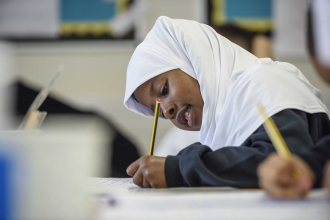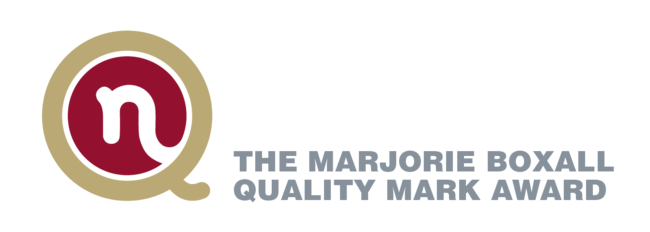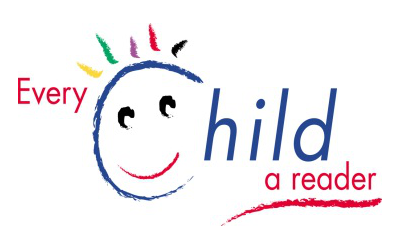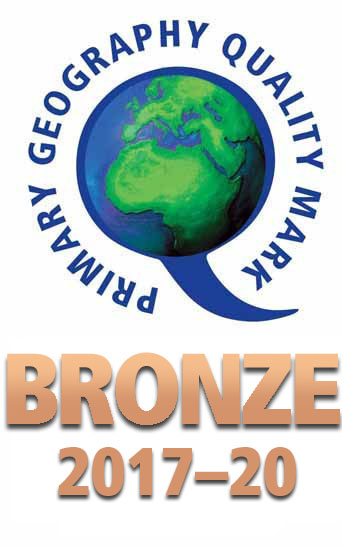Writing in Reception
Writing begins in our reception classes. The teaching team in reception use story scribing as a technique to inspire children to write. Whenever the staff feel that it is appropriate they will offer to scribe a story for a child. This story then gets acted out at the end of the day. Other types of writing are also scribed with children – these are always for a purpose. For example, a child might write a recipe to bake a cake, or write a letter to someone asking for something, or simply label something that they have made.
Children are exposed to a variety of writing or mark-making tools such as chubby pencils, paint, pastels, charcoal, water and brushes etc. on a daily basis to build up their fine and gross motor skills so that they are ready to write in year 1.
Writing in year 1 upwards
In years 1 – 6 we use a range of picture books and novels as a stimulus for teaching writing. Each term, year groups have a main fiction and non-fiction writing outcome. During some terms there will be a poetry outcome as well. Throughout the term, teachers repeatedly model the grammar skills and vocabulary necessary to write their extended piece.
Short-burst writing opportunities are also incorporated into the planning cycle, so that children have time to practise applying new skills that they have learned.
Children are invited to write for a variety of audiences and a range of different purposes. Teachers will model how to write in each genre, highlighting the differences in features, tone and formality required between each text type. This allows children to understand the different grammar and vocabulary choices required for different purposes and audiences.
Our non-fiction writing always links to our enquiry (wider curriculum) work. Through our non-fiction writing, children will demonstrate what they have learned through enquiry in the wider curriculum.
Spellings
Spelling patterns are taught weekly from year 2 upwards and the children are expected to complete a spelling test each week based on the new words taught that week.
Handwriting
Handwriting is a discrete weekly lesson but also taught alongside phonics in EYFS and year 1 using ‘Write Dance’. The children will be expected to apply this knowledge when writing in their author’s journals and other books. From year 1 upwards we follow the Nelson Handwriting scheme tightly.
Grammar
Our pupils explore and hear a range of high-quality texts read aloud and have opportunities for critical discussion which means they are better able to reflect on effects on the reader created by the writer. Reading authentic texts aloud helps them to hear the patterns and types of language used for different forms and purposes, and understand levels of formality appropriate to their intended audience. This teaches them much about the language and grammar structures appropriate for different audiences, purposes and forms of writing. Where possible, grammar is taught in context, for effect and our pupils learn the impact of choosing different grammatical approaches.
Sentence accuracy
Through analysis from children’s independent writing, we have identified the most common errors pupils make with sentence structures. Most commonly we find fragments of sentences (missing subject, verb or both), run-on sentences, comma splices or missing conjunctions. Through a targeted sequence of lessons each year in KS2, we remind children of these common errors and show them how to identify and remedy them.
Modelling
Our teaching staff model writing ‘live’, sharing the frustrations and successes involved. We model good handwriting at all times and are critical of our own work, happily and thoughtfully modelling editing and improving when necessary.
Making mistakes, unintentionally or otherwise, is one of the powerful aspects of live modelling. We show our pupils that we too are not immune to getting things wrong.
Additionally, In Years 2-6, for one term each year, and throughout the whole year, we use a teaching method called ‘Sentence Stacking’. Sentence stacking brings clarity to the mechanics of writing within a specific genre. Sentences are stacked together and organised to engage children with short, intensive moments of learning that they can then apply to their own independent writing in subsequent lessons in that unit. An individual lesson is based on a sentence model, broken into three chunks:
- A stimulus to capture the children’s imagination and word gather a wide range of suitable vocabulary in their books, which is discussed and considered for effect.
- The teacher close models just one sentence on a flipchart that outlines a specific clear writing feature or technique.
- The children write their sentence, following the model to apply that writing technique, selecting vocabulary from their word gathering for effect.
This is repeated three times in a one-hour lesson, through which the children build their own cohesive paragraph. This strategy was introduced following training in the writing methods of the educational consultant Jane Considine, author of ‘The Write Stuff’
Oracy
We believe spoken language to be fundamental to the achievement of the children at Hannah More. Many of our pupils start early school life without the oracy skills relevant for their age. We strive to develop spoken language skills through the taught curriculum, the hidden curriculum, playtimes and lunchtimes, extra-curricular activities and the whole ethos of the school. Respectful and productive relationships between all who form part of the school community are crucial aspects of this ethos. As a staff, we therefore foster good communication amongst ourselves and with our pupils, their parents and carers, and with the wider community. We place a high priority on supporting the development of good speaking and listening skills amongst our pupils, as well as promoting high aspirations.
Mapping a Medium-Term Plan
Each term our teachers map out a detailed Medium-Term Plan (MTP) for English. In every term there are two main writing outcomes: a fiction writing outcome and a non-fiction outcome. In longer terms there are poetry outcomesl. These are set in the school’s Long-Term plan to ensure that across the school and within a year group there is coverage and progression.
When a teacher begins planning the MTP they start with the main writing outcome. Most teachers dedicate 5 lessons to the main writing outcome. This allows children time to plan, draft, share, evaluate, revise, edit and publish their work in their publishing book. Once teachers have planned in their main writing outcome they then think about the skills that their children will need to successfully complete the main outcome. To support teachers with this, each writing outcome for each year group has a set of writing skills and features (referred to as toolkits in KS1 and rubrics in ks2) that children will need to know. As well as teaching children the skills identified in the toolkits and rubrics, teachers need to plan to provide children with opportunities to practise and apply these skills through short writing tasks such as character descriptions, poetry, dialogue between characters, fact files or diary entries in role. Though these tasks, children gain a deeper understanding of the source material, story and characters. Furthermore, reading lessons focus on reading comprehension and developing children’s understanding of the text.
Once the teacher has mapped out their MTP in detail there is no need to complete weekly plans for English. Instead teachers use the MTP to create smartboards for their lessons. On these smartboards it is essential that teachers add key questions that will need to be asked to ensure progress is made and children are challenged during the lesson.
The Writing sequence
A sequence of writing learning must begin with inspiration. Children are drawn into the sequence with the introduction of a new story. They explore characters, motivations, setting, plot, dilemmas, genre etc. with a range of engaging activities that develop their comprehension and deepen their understanding of the story. At this stage the purpose of the writing unit is revealed and both the children and teacher discuss ways in which that purpose can be met. For example, an action story’s purpose is to excite the reader, so it may include exciting language choices, short sentences for impact, an action-packed plot and heroes and villains. When this has been decided upon, the teacher will guide the children through the writing process.
When children are required to write, the teacher will model the writing process live. This allows them to share the difficulties of writing and model how to overcome these difficulties. Teachers then demonstrate how they can use different grammar techniques and vocabulary to create a successful and purposeful piece of writing. Once children have seen the writing in action they are then given the chance to write their own versions.
Sometimes lessons may involve the teaching of grammar. Grammar is most likely to be understood within the context of authentic reading and writing activities. Teachers will model how to use the different grammar techniques for purpose and provide opportunities for children to practise these grammar techniques with scaffolds, and then independently.
At the end of each sequence, having ensured the children are secure with the features of their text-type, teachers will invite pupils to create their own version, independently. Through careful planning, pupils will consider the purpose and audience that they will be writing for and the implications that this has on their language and grammatical choices.
The writing outcome will generally be completed over a series of 5 lessons giving children time to plan, draft, share, evaluate, improve, edit and publish their work.

Writers with SEN and those who are working below their year group
To support teachers and children understand the expectations for each main writing outcome the writing standards have different expectations for each ability. Every child has the same set of standards so that all children have the opportunity to achieve beyond expectation.
During writing and grammar lessons, children are supported with scaffolds so that they can work as independently as possible. This could be in the form of writing frames, vocabulary mats, visual and auditory support and other adapted activities.
Where appropriate, children with SEN and those who are working below their year group may be set work with additional, targeted success criteria to help them. All children will be supported to reach the learning objective taught to the whole class.
Writers with Greater Depth
To support teachers and children understand the expectations for each main writing outcome the writing standards show different expectations for each ability. Every child has the same set of standards so that all children have the opportunity to achieve beyond expectation.
In grammar and vocabulary lessons there is always a challenge provided to engage the children who grasp a concept quickly. The expectation is that the greater depth children will complete this challenge.
When children are set a writing task there is also always a challenge. The outcome will be the same as the other children however the challenge will ‘deepen the moment’ with an additional element that enhances the meaning. For example to write with a more formal tone or to develop the atmosphere further in a descriptive passage using more sophisticated vocabulary, structure or punctuation.





